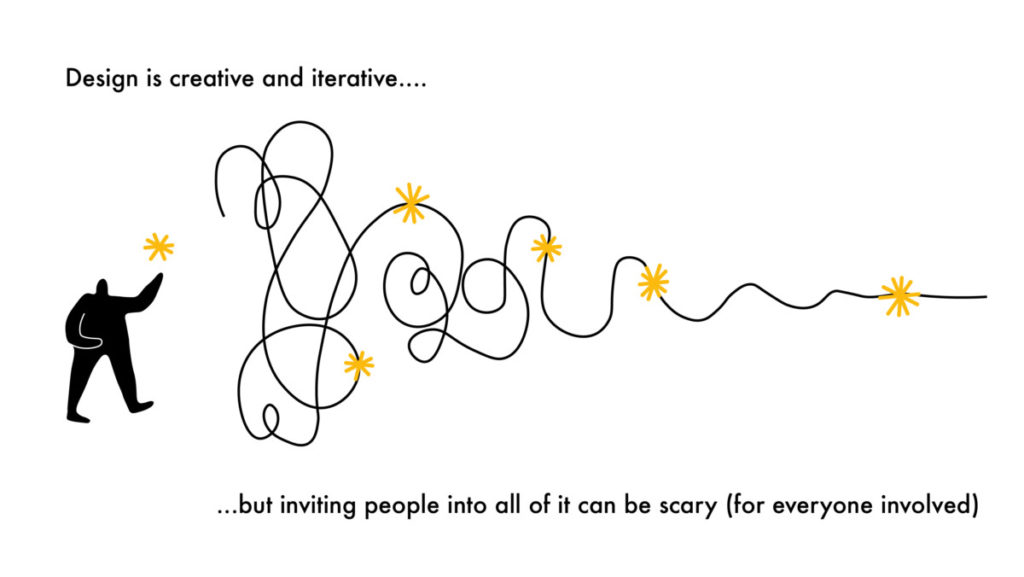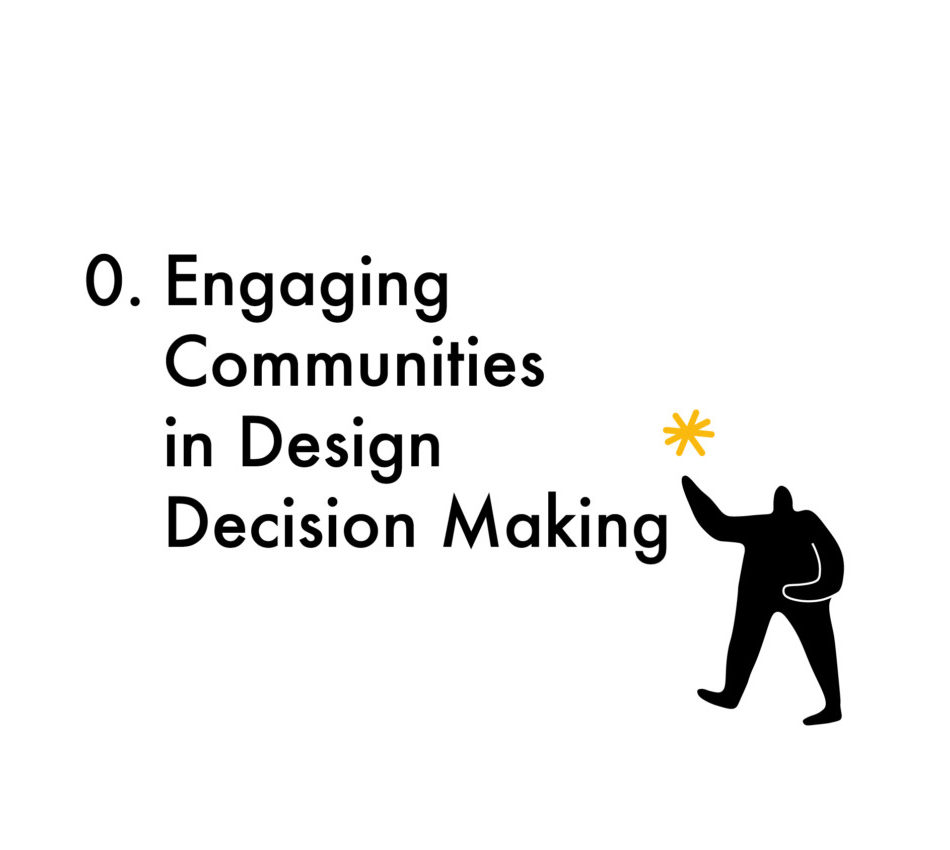Written by:
In the past few months, we’ve had some interesting conversations within communities, with local authorities, with designers and a range of collaborators, about how to agree terms for decision-making in community-engaged and collaborative design processes. While I don’t have all the answers, I do think that setting out some of the key considerations might be useful.

The Problem
Traditional consultation in placemaking tends to present design either for comment with a sort of “Do you like this?” approach, or as a series of options, generally presented as quite evolved and detailed designs from which people are asked to choose their favourite from a set of drawings, often displayed as an exhibition.
While I can see there is a certain efficiency to this approach, it is leaving people out of the fundamental space for exploration and experimentation that makes the design of places both so interesting and so powerful, particularly when we are designing for diverse needs and users. This is both a complex and fascinating creative space, where the design team must bring together a huge array of considerations. They must work through a series of combinations of design ideas to find what they see as the best way to hit as many points of functionality as possible, with a robust, manageable and pleasing form, while creating a sense of delight and welcome among those who use it. The designer’s quest is to bring together the right balance of form, function and feeling.
This is no small task and never something that will be achieved in one iteration of any design. It will require trying a few different approaches, changing various elements and combinations. It will involve a series of conversations with the client and stakeholders. It will go in and out of both fanciful and highly practical ideas, testing limits, being challenged by budgets, viability targets, time scales and the constraints of the site. It is a long creative journey of ideas generation, problem-solving and decision-making that communities rarely have the opportunity to see or to understand, let alone to meaningfully inform.
Consultation, as it is most often delivered, does not really invite people into the journey of designing places in a way that can meaningfully allow them to understand, contribute to or defend the decisions that are made DURING the design process. More often than not, rather than being invited into that creative journey of design decision-making, local people and organisations are invited to comment on, or ratify, a series of design decisions that have already been made.
So, we end up with this strange paradox in placemaking, that design strives to make life better for people, but tends to leave people out of the design journey.
I hear the naysayers now, saying, “Yes, but how can you possibly manage to bring a whole community into every decision made in that process?” Obviously, you can’t. However, there is a lot you can do to create windows and routes into that process to help people engage with and understand it, as well as creating space for meaningful contributions to the process, collaboration in shared decision-making. If done well, those who have been engaged will not only feel a shared sense of responsibility for the built outcomes, but also for the decisions that have informed them.
I would argue that design is such an interesting and potentially empowering space in terms of decision-making precisely because it is so complex (and never just a simple set of three options). When people work together through participatory and co-design processes, the journey creates opportunities to identify shared values, objectives and ambitions, to work through differences, to both imagine and co-create practical solutions to problems. Collaborative design can offer a fantastic frame for shared decision-making at different scales and with varying parameters of influence.
Our Provocations
In the series of blogs to follow, I’ll be exploring some aspects of empowering communities in and through design decision-making and sharing some considerations to spark discussion. These will draw on over two decades of Glass-House experience in empowering communities in and through design, and on the many conversations we have had within communities (with individuals and community-based groups, organisations and networks, as well as local businesses and service providers), with design professionals, local authority officers and elected members, housing providers, developers, researchers, academics, policy makers, and interest groups of many shapes and sizes.
My intention is not to offer a how-to guide, but rather a series of think pieces to serve as prompts for further discussion, innovation, reflection, and iteration in this space and to encourage others to share ideas, approaches and stories.
Over the following 5 weeks, we will publish blogs on the following themes:
1. Unpicking Design Engagement
2. The Role of Effective Community Design Engagement Strategies
3. Building an Infrastructure for Collaboration
4. Scheme-based vs Place-based Conversations
5. Exploring Community Design Groups & Review Panels
If any of these blogs spark some thinking or experiences you would like to share, we invite you to write your own blogs on these themes or simply to get in touch and explore how we might collaborate on them. You can contact The Glass-House team at info@theglasshouse.org.uk.
Feel free to join the discussion on social media @GlassHouseCLD.


